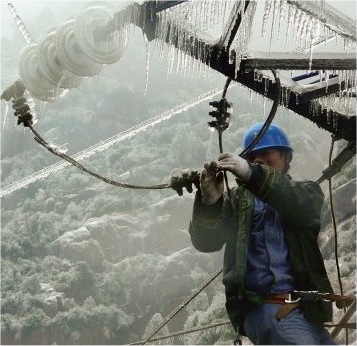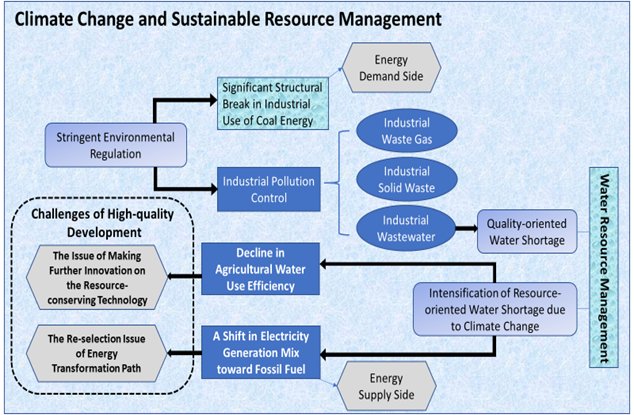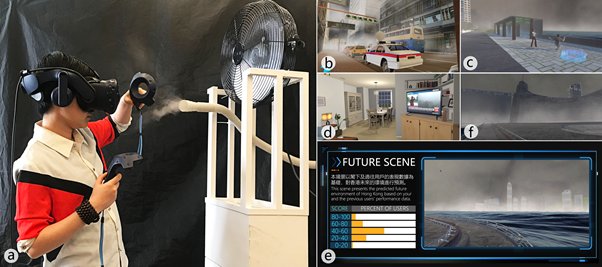Monsoon and Climate Change
|
| Biases of North Atlantic Storm Track and Ural Blocking Influencing on East Asian Winter Monsoon Projection | |
|
Projection of East Asian winter climate under a global warming scenario is very challenging because unusual and sudden cold weather over Eurasia has become very frequent recently, even though people expect warmer winters to accompany global warming. The frequent unexpected cold winters of recent decades actually highlight the need to improve our understanding and prediction abilities. Anomalous East Asian winter monsoons bring extreme winter weather to South China, including Hong Kong. For example, the Hong Kong Observatory recorded 24 consecutive cold days from 24 January to 16 February 2008, which was the longest cold spell since 1968. In boreal winter, the eastward extension of the North Atlantic storm track and the frequency of atmospheric blocking centered over the Ural Mountains and western Siberia are interrelated. This interrelationship is also closely tied to the occurrence of extreme cold spells in East Asia and the intensity of the East Asian winter monsoon. However, most general circulation models (GCMs) do not simulate the spatio-temporal variability of the storm track and blocking very well. It is important to understand the biases in the North Atlantic storm track and Ural blocking in order to evaluate the uncertainty in projecting the East Asian winter monsoon. In this study, we propose novel analyses of the relationship between the North Atlantic storm track and Ural blocking using reanalysis datasets and the GCMs participating in the fifth phase of the Coupled Model Intercomparison Project (CMIP5). First, we will diagnose the relationship between Ural blocking and the North Atlantic storm track using observations and CMIP5 GCMs. The major energetic and dynamic factors contributing to the biases in this relationship will be highlighted. Second, we will select the GCMs that can best simulate the blocking V storm track relationship, and then project the future changes in RCP4.5 and 8.5 runs. We will explore projection uncertainties in each run. Finally, we will carry out numerical experiments with different SST conditions over the North Atlantic to verify our hypothesis. |
 |
|
Through this study, we will better understand the inter-model spread of storm track and Ural blocking simulations and evaluate their impacts on future changes in the East Asian winter climate. These results should also be important for risk assessment of extreme winter conditions in Hong Kong under a changing climate. |
|
| Teleconnections and Future Changes in the East Asian Winter Monsoon under Arctic Amplification | |
|
After the severe and prolonged snowstorms in South China in
January 2008, several extreme cold spells hit different parts of the
Northern Hemisphere in the six winters between 2008/09 and 2013/14.
Because the intensity and duration of these cold spells were exceptional
in the past few decades, more research should be devoted to understanding
the underlying physical mechanisms of cold extremes under a changing
climate in order to better predict their occurrence in the future. In East
Asia, the occurrence and persistence of extreme cold spells are closely
related to an anomalous East Asian winter monsoon. These cold spells are
preceded by blocking events near the Ural Mountains and the western
Pacific. The occurrence of blocking events is linked with low-frequency
atmospheric oscillations, such as the North Atlantic Oscillation and the
El Nino/Southern Oscillation. Estimations of future Ural and western
Pacific blocking frequency and characteristics are crucial for projecting
change in the East Asian winter monsoon. |
 |
|
One area of particular concern is the effect that climate change and the substantial reduction of Arctic sea ice might have on the winter monsoon circulation over East Asia. How the East Asian winter monsoon will respond to a warmer planet is not totally clear. One possibility is that anomalous blocking events (frequency, location, intensity, duration) due to Arctic amplification and sea ice loss may enhance extreme cold spells, but the mechanisms potentially involved in such changes are still under discussion. For example, the Hong Kong Observatory recorded 24 consecutive cold days from 24 January to 16 February 2008, which is the longest cold spell since 1968. Due to the huge economic loss this prolonged cold spell caused in South China, it is important to better prepare for the impact of cold extremes under the global warming trend. |
|
|
| Technology and Finance: Innovation and diffusion for climate change mitigation | |
|
Stringent climate policy is believed to be associated with high cost for an economy. Endogenous technical innovation is essential for the economic development in the long run in the new growth literature. In this study, we introduce an economic way of modelling technology innovation and climate change based on the model of Nobel Laureates William Nordhaus and Paul Romer. The methods are then applied to study the macroeconomic impacts of climate policy for growing economy. The framework includes disaggregated industrial and energy sectors, endogenous innovation, sector-specific investments, inter-sectoral and international knowledge spillover. The model and its extensions are applied to study specific climate policy in China, Switzerland, and policy at the global level. |
 |
| Sustainable Water Management: Efficiency and policy under climate change | |
|
The relevance of water stress in a changing climate across the various sectors of the economy, from the running of residential daily life to economic activities. In China, surface water and total water resources have decreased by 5.2 and 3.2% during 2001-2009 relative to the period 1956-2000. In this talk, I will address the issues related to water use and water management in the agricultural, industrial, and power sectors. I will also discuss how the climate change affects water use efficiency and water use technology in response to the increase in water scarcity. The effectiveness of current and future water use policies to address sustainable management of water resources are empirically investigated by using data at national, provincial, sectoral, firm levels. |
 |
|
| Embodied Weather | |
|
Increased anthropogenic activities have been changing the
earth's environment, leading to a higher frequency of extreme weather,
such as typhoons, flooding, heat waves, and cold surges. The potential for
extreme weather has become severe across the globe, affecting the social,
economic, and environmental aspects of our daily life. Raising the
public's understanding of these issues could reduce the impact of extreme
weather. Although there are various educational materials (e.g., books,
talks, documentary videos, etc.) on extreme weather, the general public
still has limited understanding of the immediate and long-term impacts of
extreme weather. This could be due to the lack of active user engagement
in the existing educational media, as users can read books, listen to
lectures, or watch videos without any further interaction. While haptic
feedback in VR has shown positive effects on the user experience,
immersive multi-sensory virtual reality (VR) could be proven to be an
effective medium for active learning [Dede et al. 1996]. Therefore, this
technology has great potential to promote the public's understanding of
extreme weather and its impact on our daily life. |
|
  |
|





